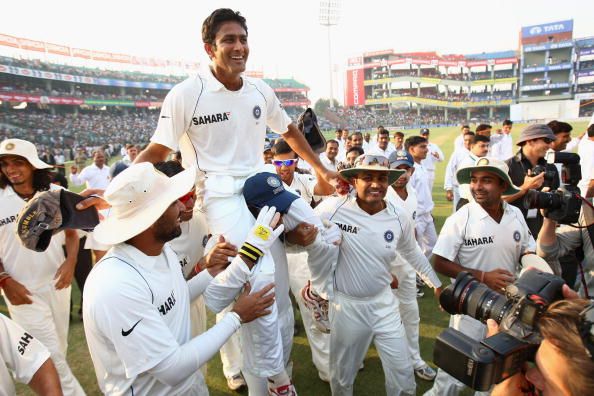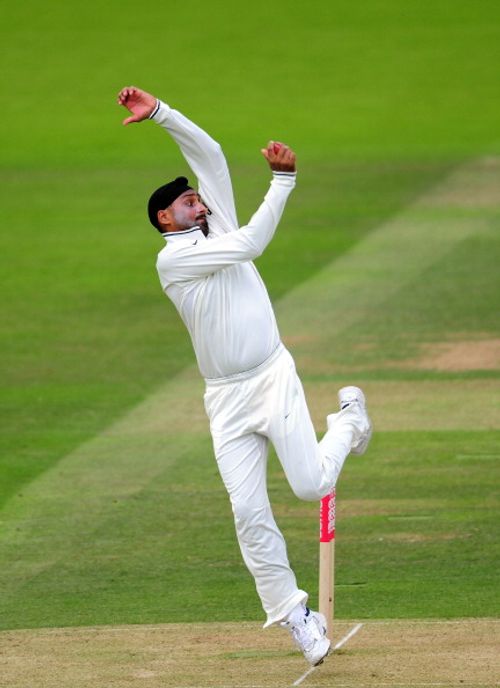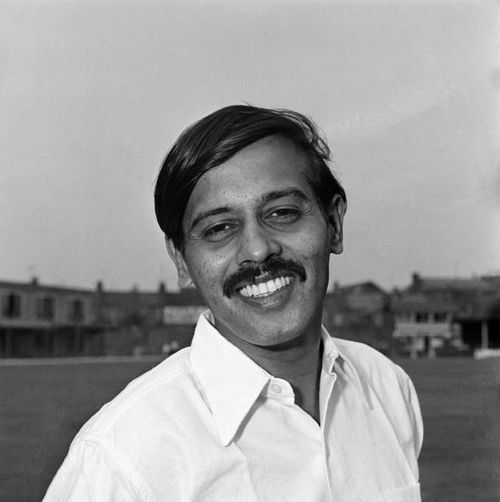
Indian All Time Spinners XI
India, popularly known as the spin paradise in the cricket fraternity, has produced a number of world class spinners since the inception of the game. Out of all the cricket pitches in India, almost 75% are spinner friendly because of which the Indian batsmen are considered as the best players of spin bowling. There is no denying the fact that it is the spinners who have played a major role in India’s wins, both abroad and especially in the sub-continent. India has been blessed to have produced quality spinners for decades now and has continued to bless the cricket world with it.
Number one on the list will be the most successful bowler in International Cricket for India, Anil Kumble. He is perhaps one of the best bowlers in world cricket to have ever held the cricket ball. Not a great turner of the ball, but his line, accuracy and uncanny variations led him to 956 International wickets. He was more than dangerous on pitches that offered bounce. If there was even a slender crack in the pitch, then the day was sure to be full of perturbing experiences for the opposition batsman. Those who were lucky enough to see him play could easily tell you how hard he used to try at every delivery. In 1999, Kumble accomplished what no Indian bowler had ever achieved by seizing all ten wickets in an innings against Pakistan, becoming only the second player in the history of the game to have done so behind the legendary Jim Laker.

In 2002, after getting his jaw fractured while batting in the West Indies, it was almost certain that Kumble was out for rest of the tour, but a true fighter never quits. Even though the doctor advised him to not bowl, he came back with a broken jaw and a white bandage on it and took the all-important wicket of Brian Lara. Sir Vivian Richards termed it as the bravest thing he had seen on a cricket field. Though the match was a dead rubber, it will always be remembered for the heroic spirit of one Anil Kumble.
Number two on the list will be the man who could pitch the ball even on a pin, Bishan Singh Bedi. The impressive record of bagging 267 wickets in just 67 Test matches does not justify the talent and calibre of Bedi. He finished with 1560 first-class wickets, more than any other Indian bowler. His left arm spin was very deceptive and was a vital part of the quartet of Erapalli Prasanna, Bhagwath Chandrasekhar, S. Venkataraghavan and Bedi. He had flight, loop, spin and pace under his armoury. Perhaps, if he would have born in another era, he would have got a lot more opportunities than he did.
Number three on the list is the legendary Subhash Gupte. This spinning legend took 139 wickets in just 36 matches with 12 five-wicket hauls. He was a great turner of the ball with immaculate control over line and length. His best figures were 9-102 against West Indies, which remained the best for any Indian bowler for a long time before Kapil Dev broke the record in 1983. The great Vinoo Mankad once said that if at all there was magic in cricket, then Subhash Gupte was certainly the magician.
Number four on the list is Bhagwath Chandrasekhar. He was afflicted with polio during his childhood which led to a paralysed hand, which resulted in an unorthodox action and in turn became the reason for his success both at home and oversees. A long run up and a quick arm, back of the hand release action always meant trouble for the opposition batsman. He was the pioneer for India’s first series win in England in 1971 and also in registering their first win in Australia, with him taking 12 wickets in the match. He was named the Wisden Cricketer of the Year 1972. The leg spin legend played 58 Test matches for India and took 242 wickets at an average of 29.74.
Number five on the list is the first Indian bowler to take a Test hat-trick, Harbhajan Singh. Another spinner who does not turn the ball like many of his contemporary off spinners, Harbhajan relies heavily on the variations in bounce and pace. His aggression is not unknown to anybody. Experts complain about a lack of loop and flight, but that might be blamed on the modern form of cricket, with shorter boundaries and heavy bats. In the most famous India-Australia series 2001, he bagged an astounding 32 wickets in just three Test matches including a hat-trick.

Back then he had everything under his armoury – an off-spinner that turned, a perfect doosra and the top spinner. But what we see now is just a pale shadow of the Harbhajan who got Ricky Ponting out 5 times out of six in the 2001 series. He is the third highest wicket taker for India in Tests, bagging 408 wickets in 99 matches. A true fighter, we hope he finds his rhythm back soon and ends up being the highest wicket taker in all the formats.
Number six on the list is Erapalli Prasanna. Another off-spinner, Prasanna was one of those unique cricketers who took a break from international cricket to complete his engineering course. He relied heavily on flight and was considered as the best off spinner of Indian Cricket for long time. His ability to deceive the batsman in flight was his main weapon and his arm ball was completely deceiving. He was awarded a permanent spot in Nawab Pataudi’s side and delivered for India in 49 Test matches that he played, bagging 189 wickets.
Number seven on the list is Mulvantrai Himmatlal Mankad, popularly known by his nickname Vinoo. He is one of the greatest all-rounders India has ever produced. As a bowler, he was a slow left-hander of the old-fashioned orthodox type, varying his natural slow left arm with a faster one which came with his arm and got him lots of wickets. He was very good with the bat too and was an opener for the major part of his cricket career. He was the one who first invented the chinaman when he was a boy, but was swayed by his coach, Bert Wensley, to abandon it. For some years he was undoubtedly the best bowler of his type in the world.
Number eight on the list is Srinivas Venkataraghavan. The off spinner was a member of the famous spin quartet of Bedi, Chandrasekhar, Prasanna and himself. He was well known for his accuracy and control of the red ball. Throughout his career, he had to fight with E. Prasanna for the off-spinner’s slot in the side. Though his test record of 156 wickets in 57 Test matches does not justify the talent he possessed, he had a fearsome reputation among his contemporaries. After retiring with a mind boggling 1390 wickets in 341 first class matches, he adopted umpiring for the love of the game and went on to become the most successful Indian umpire ever.

Number nine on the list is the left arm sensation Dileep Doshi. Like Venkatraghavan, Doshi had to compete for the left arm spinner’s slot with Bishan Singh Bedi. If born in another era, Doshi would have gone to play more than 100 test matches, but because of his unhealthy relations with Gavaskar and a bowler like Bedi in the ranks, he got his opportunity when he turned 32 and took 100 wickets in just 28 matches. It is believed that his bitter relations with Gavaskar ended his career in 1982. His son Nayan Doshi is also a left arm spinner who plays for Saurashtra.
Number ten on the list is the bowler with the best figures (16-136) in Tests for India, Narendra Hirwani. He was a magician on turning surfaces but his inability to get wickets abroad led to his downfall and with Kumble waiting in the ranks, he was not preferred thereafter. But he continued to impress in the domestic circuit for long and ended with 732 wickets in 167 matches.
Number eleven on the list is Ravi Shastri. He was one who was certainly not gifted, but like Kumble, the effort was always there. He was a hard worker and an excellent utility player. He started as a left arm spinner and used to bat at number 8 and 9. He had an excellent debut, bagging 6-63 against New Zealand. But his left arm spin took a back seat and by the time he retired, he used to open the batting and was used as a part timer.